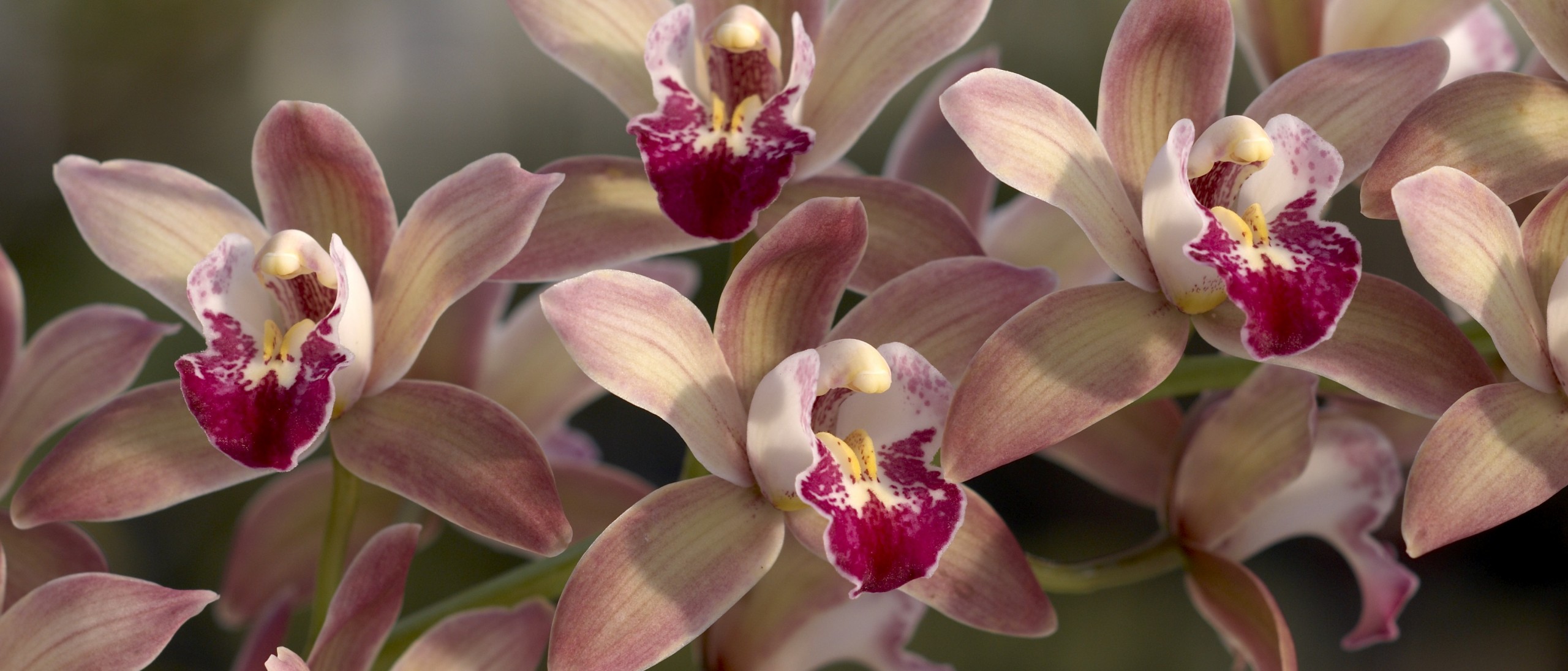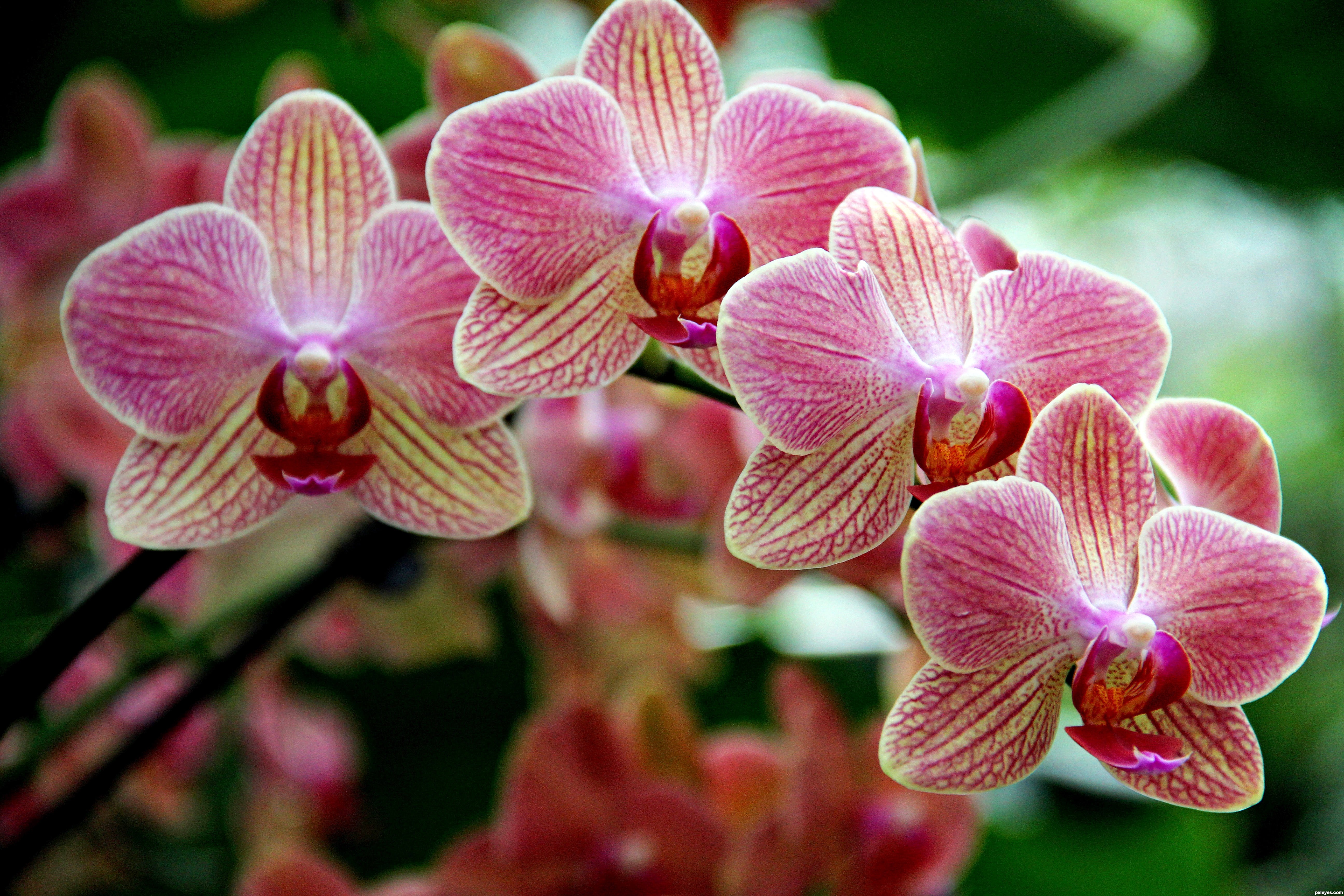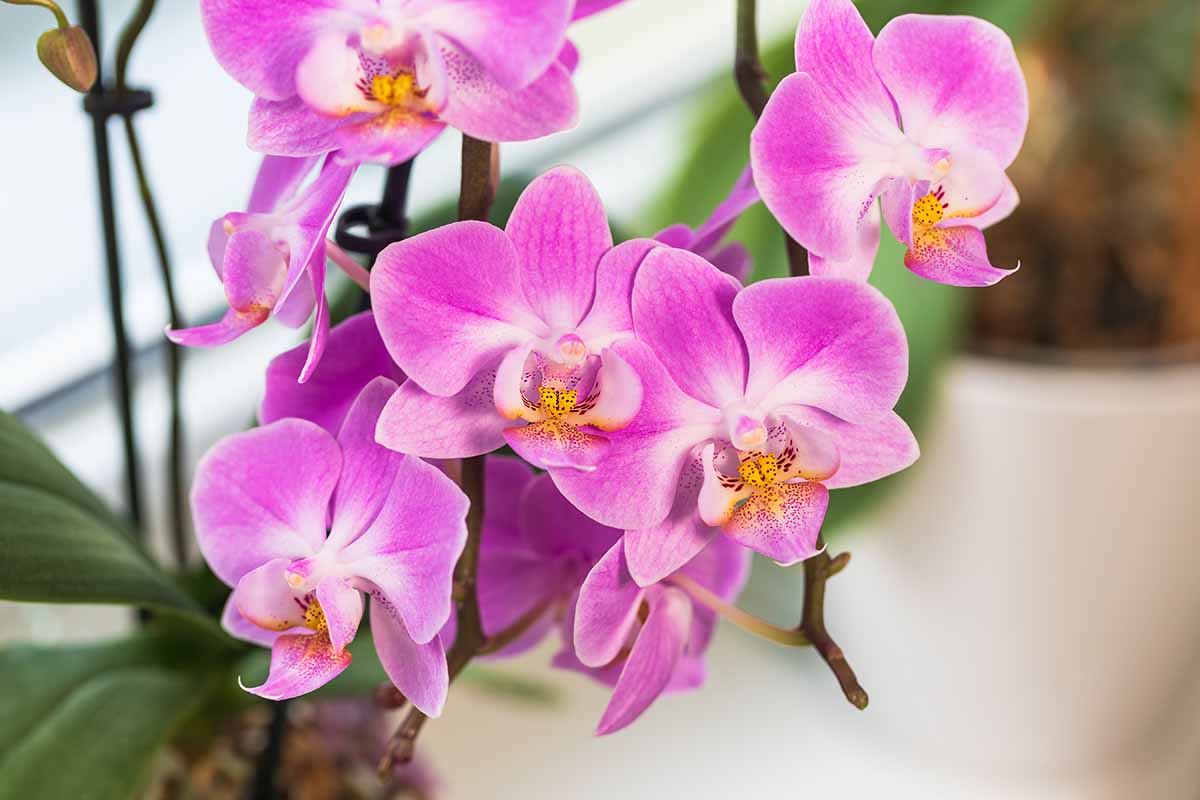Plant beginning with o – Embark on a captivating journey into the world of plants beginning with the letter O, where orchids, oaks, and olives unveil their secrets. From the delicate beauty of orchids to the towering majesty of oaks and the culinary delights of olives, this exploration promises an immersive experience that blends scientific knowledge with captivating storytelling.
Orchids, with their exquisite blooms and diverse fragrances, have captivated cultures for centuries. Discover the art of orchid cultivation, unraveling the mysteries of light requirements, watering techniques, and the unique characteristics that set each species apart.
Orchids

Orchids are one of the most diverse and fascinating plant families, renowned for their exquisite beauty and intricate blooms. With over 28,000 recognized species, orchids exhibit an astonishing array of shapes, colors, and fragrances, captivating plant enthusiasts and collectors worldwide. Their cultivation requires specialized care, but the rewards are well worth the effort, as these elegant plants bring a touch of exotic elegance to any indoor space.
Light Requirements
Orchids thrive in bright, indirect light. Direct sunlight can scorch their delicate leaves, so it’s essential to provide them with filtered or shaded light. East- or west-facing windows are ideal, as they offer ample illumination without the risk of excessive heat.
Watering Techniques
Watering orchids correctly is crucial for their health and longevity. These plants prefer well-drained potting media and should be watered only when the potting mix feels dry to the touch. Overwatering can lead to root rot, so it’s better to err on the side of caution. Use lukewarm water and avoid getting water on the leaves, as this can promote disease.
Common Varieties
The orchid family encompasses a vast range of species, each with its unique characteristics. Some of the most popular varieties include:
- Phalaenopsis: Commonly known as moth orchids, these are among the easiest orchids to grow indoors. They produce graceful, arching flower spikes with delicate, butterfly-like blooms.
- Cattleya: Known for their large, showy flowers, Cattleya orchids come in a vibrant array of colors. They require slightly more care than Phalaenopsis orchids, but their stunning blooms make them worth the extra effort.
- Dendrobium: This genus includes a wide variety of species, ranging from miniature orchids to large, cane-like plants. Dendrobium orchids are known for their clusters of long-lasting flowers, which can bloom in a variety of colors.
Cultural Significance
Orchids hold a significant cultural and historical value in many societies around the world. In ancient Greece, they were associated with fertility and virility. In China, they symbolize beauty, refinement, and elegance. In many cultures, orchids are used in traditional medicine and religious ceremonies.
Oaks: Plant Beginning With O

Oak trees (Quercus spp.) are majestic and ecologically significant members of the Fagaceae family, renowned for their longevity, resilience, and ecological importance. They play a crucial role in supporting biodiversity and providing ecosystem services that benefit both wildlife and human communities.
Ecological Importance
Oaks are keystone species, meaning their presence has a disproportionately large impact on the surrounding ecosystem. Their expansive canopies provide nesting sites and shelter for a wide array of birds, mammals, insects, and other wildlife. The acorns they produce are a vital food source for many animals, including squirrels, deer, and bears. Additionally, oak trees help regulate the water cycle by absorbing and storing rainwater, reducing erosion and flooding.
Diversity of Oak Species
The genus Quercus comprises over 400 species, each with unique growth habits, leaf shapes, and acorn characteristics. Some notable oak species include:
– Red oak (Quercus rubra): Known for its vibrant autumn foliage, red oaks have deeply lobed leaves and produce large, sweet acorns.
– White oak (Quercus alba): White oaks have less deeply lobed leaves than red oaks and produce smaller, bitter acorns. They are known for their durable wood, which is used in furniture and flooring.
– Live oak (Quercus virginiana): Live oaks are evergreen trees with leathery, elliptical leaves and small acorns. They are native to the southeastern United States and are often used as ornamental trees.
Planting and Care
Oaks are relatively easy to grow in urban and suburban landscapes, but they do have specific requirements for optimal growth.
– Planting: Choose a well-drained site with full sun to partial shade. Dig a hole twice as wide as the root ball and just as deep. Place the tree in the hole and backfill with soil, tamping down gently to remove air pockets.
– Watering: Water deeply and regularly, especially during the first year after planting. Once established, oaks are drought-tolerant and do not require frequent watering.
– Fertilizing: Fertilize oak trees sparingly, if at all. Excessive fertilization can promote excessive growth and make trees more susceptible to pests and diseases.
Olives

Olives, the fruit of the olive tree, have been a culinary and cultural staple in the Mediterranean region for millennia. These small, oval-shaped fruits are known for their distinctive flavor and versatility, used in various dishes, from salads and appetizers to main courses and desserts. Beyond their culinary value, olives are also prized for their nutritional properties and health benefits.
Nutritional Value and Health Benefits
Olives are a rich source of healthy fats, particularly monounsaturated fatty acids (MUFAs). MUFAs have been linked to several health benefits, including reduced risk of heart disease, stroke, and certain types of cancer. Olives also contain antioxidants, such as vitamin E and polyphenols, which can help protect cells from damage caused by free radicals.
| Variety | Calories (per 100g) | Fat (g) | Carbohydrates (g) | Protein (g) |
|---|---|---|---|---|
| Kalamata | 115 | 10 | 6 | 1 |
| Niçoise | 120 | 11 | 5 | 1 |
| Arbequina | 110 | 9 | 7 | 1 |
| Manzanilla | 125 | 12 | 4 | 1 |
History and Cultural Significance, Plant beginning with o
The olive tree (Olea europaea) is native to the Mediterranean region, where it has been cultivated for over 6,000 years. The ancient Greeks and Romans considered the olive tree sacred, and it was often associated with peace, wisdom, and abundance. Olive oil was used for cooking, lighting, and religious ceremonies.
During the Middle Ages, olive cultivation spread to other parts of Europe, including Spain, Portugal, and Italy. Today, olives are grown in many countries around the world, including the United States, Australia, and South Africa.
Growing Olive Trees
Olive trees are relatively easy to grow in warm, Mediterranean-like climates. They prefer well-drained soil with a pH between 6.0 and 8.0. Olive trees are drought-tolerant, but they will produce more fruit if they are watered regularly.
Olive trees can be grown from seed, but it is more common to propagate them from cuttings. Cuttings should be taken from healthy, mature trees in the spring or fall. Olive trees typically take several years to bear fruit.
Once established, olive trees require minimal care. They should be pruned regularly to encourage fruit production and prevent disease. Olive trees are also susceptible to pests and diseases, such as the olive fruit fly and verticillium wilt. Regular monitoring and appropriate control measures are essential for maintaining healthy olive trees.